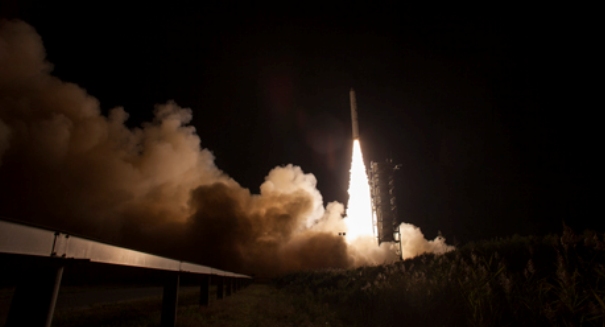
NASA says the LADEE spacecraft should operate without issue from here on out.
Potential disaster was averted late Friday with NASA’s recently launched Lunar Atmosphere and Dust Environment Explorer (LADEE) after the spacecraft unexpectedly shut down the reaction wheels that NASA says are “used to position and stabilize the aircraft.” NASA managed to bring the reaction wheels back online and to return LADEE to safe-mode operation.
The LADEE, which launched from the Virginia-based Wallops Flight Facility, is currently en route to the moon. After the 30 day trip, the spacecraft will enter lunar orbit. However, had NASA been unable to bring the LADEE’s reaction wheels back online, the craft may have lost its ability to effectively communicate with mission controllers, and the mission would have compromised.
The random reaction wheel shutdown took place during a series of late Saturday evening technical checkouts. The mission team, operating from NASA’s California-based Ames Research Center, later connected the shutdown to a safeguard system that was put on the reaction wheels leading up to the launch of the spacecraft. NASA’s press release concerning the occurrence did not go into specific detail about the safeguard program, and merely stated that some sort of limit was placed on the reaction wheels’ operation that caused a spontaneous shutdown shortly after they were brought online. NASA has now disabled those limits, and the LADEE spacecraft should operate without issue from here on out.
NASA assured the press that the reaction wheel fault protection program – the cause of the shutdown – will now be managed manually by the LADEE mission control team for the time being, and that the team will work to develop a more effective limitation program that does not cause unforeseen shutdowns. The team director at the Ames Center, S. Pete Worden, also stated that the mission is progressing as planned despite the momentary struggle with technical difficulties.
“The initial checkout flight procedure is progressing,” he said. “The reaction wheel issue noted soon after launched was resolved a few hours later. The LADEE spacecraft is healthy and communicating with mission operators.”
The LADEE mission is an unmanned, robotic spaceflight that will take the craft into orbit around the moon to collect “detailed information about the lunar atmosphere, conditions near the surface, and environmental influences on lunar dust.” NASA hopes that “a thorough understanding of these characteristics will address long-standing unknowns, and help scientists understand other planetary bodies as well.” Once the craft reaches orbit, it will stay there for approximately 100 days.
Leave a Reply